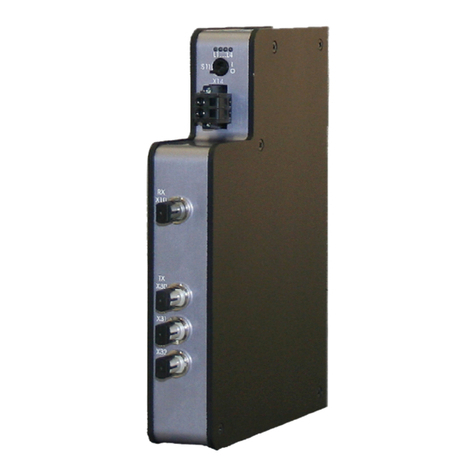
8.4 Time synchronization .................................................................................. 28
8.5 Signal processing........................................................................................ 28
8.5.1 Sampling rate.............................................................................................. 28
8.5.2 Signal filtering ............................................................................................. 29
8.5.3 Automatic range switching .......................................................................... 29
9Updates..........................................................................................................31
9.1 Update via ibaPDA...................................................................................... 31
9.2 Update of the modules................................................................................ 31
10 Configuration with ibaPDA...........................................................................33
10.1 First steps ................................................................................................... 33
10.1.1 Overview of the modules in ibaPDA............................................................ 40
10.2 Basic modules in I/O Manager .................................................................... 41
10.2.1 PQU-S –“General” tab................................................................................ 41
10.2.2 PQU-S –“Analog” tab ................................................................................. 43
10.2.3 PQU-S –“Digital” tab .................................................................................. 43
10.2.4 PQU-S –“Diagnostics” tab.......................................................................... 44
10.2.5 ibaPQU-S –“General” tab........................................................................... 45
10.2.6 ibaPQU-S –“Digital” tab.............................................................................. 46
10.2.7 ibaPQU-S –“Status” tab.............................................................................. 47
10.2.8 Diagnostics - “General” tab ......................................................................... 48
10.2.9 Diagnostics - “Digital” tab ............................................................................ 48
10.3 Submodules to calculate characteristic values............................................ 50
10.3.1 Grid module ................................................................................................ 50
10.3.2 EN50160 submodule: Power frequency...................................................... 54
10.3.3 Submodule EN50160: Supply voltage variation........................................... 56
10.3.4 EN50160 submodule: Flicker severity......................................................... 57
10.3.5 EN50160 submodule: Supply voltage unbalance........................................ 58
10.3.6 EN50160 submodule: Harmonic voltage ..................................................... 59
10.3.7 EN50160 submodule: Mains signalling voltage........................................... 61
10.3.8 EN50160 submodule: Voltage events.......................................................... 63
10.3.9 Basic submodule......................................................................................... 64
10.3.10 Phasor submodule...................................................................................... 66
10.3.11 Power submodule ....................................................................................... 68
10.3.12 Spectrum submodule.................................................................................. 70
10.3.13 Unbalance submodule ................................................................................ 73
10.3.14 Flicker severity submodule.......................................................................... 75
10.3.15 Aggregation submodule .............................................................................. 77
10.3.16 Commutation notches submodule............................................................... 82
10.3.17 Events submodule....................................................................................... 83
11 Technical data ...............................................................................................85
11.1 Main data.................................................................................................... 85
11.2 Interfaces.................................................................................................... 86
11.3 Digital inputs ............................................................................................... 87
11.4 Grid characteristics ..................................................................................... 88




























